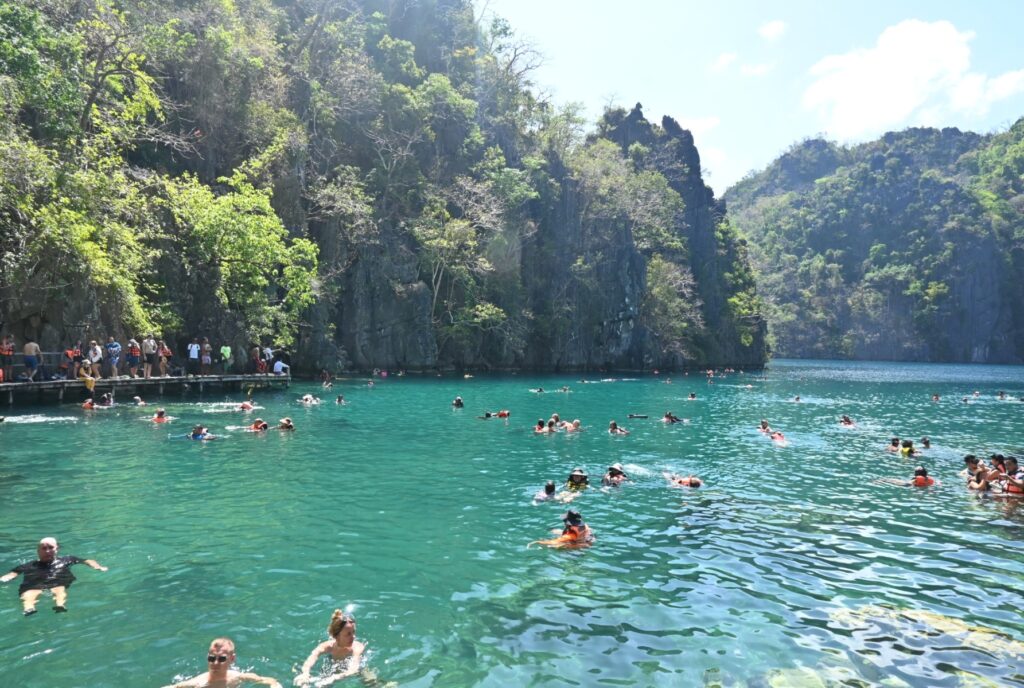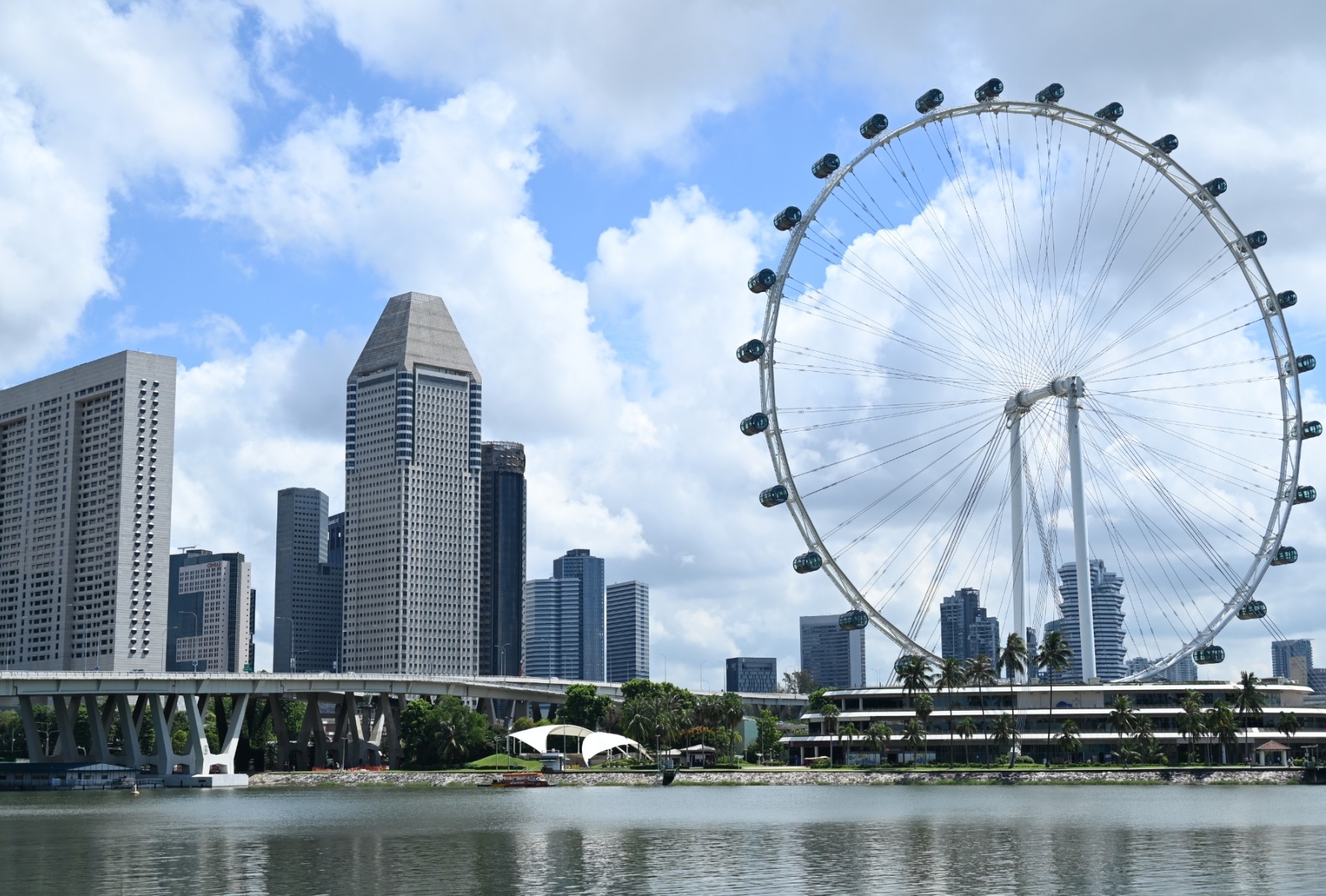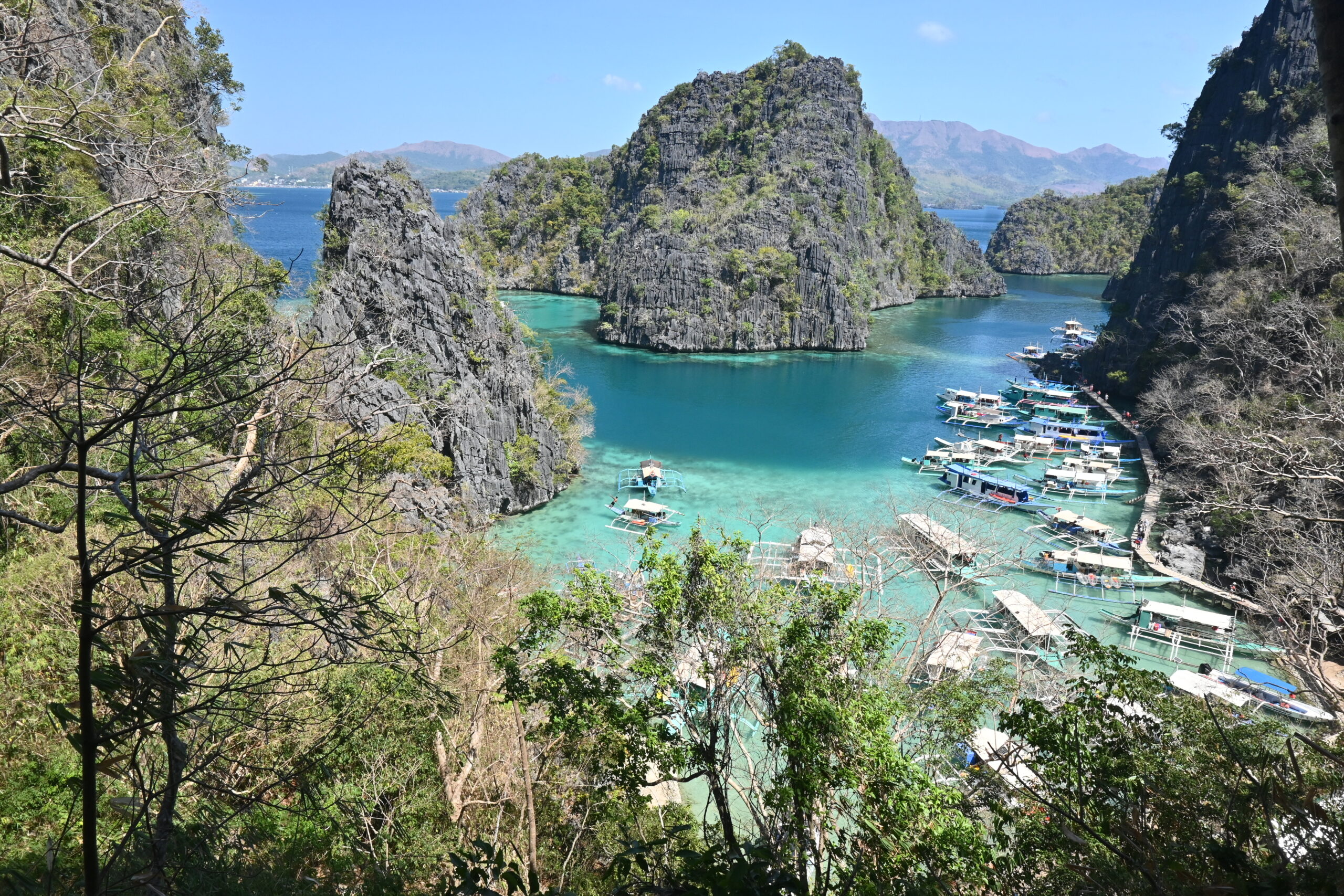THE HAIRY GIRAFFE… IN THE PHILIPPINES
After two weeks in the Philippines, it’s time to take stock. How did we experience this trip? What were our joys, disappointments, questions, doubts, and discoveries? This is obviously not an assessment of a country but of a journey. As we perceived it, individually, subjectively.
 We are François and Benjamin, Canadian and French giraffe hairstylists and travel enthusiasts. On this blog, discover our travels, tips, moods, and everything you need to become a giraffe hairstylist and embark on travelling the world. An honest blog with photos guaranteed 100% unfiltered and untouched. |
Benjamin’s Travel Reflections
Before preparing our 8-month trip around the world, I had no preconceived image of the Philippines. But as soon as I began searching the internet for travel ideas in Asia, I stumbled upon millions of photos. Let’s say it straight away: the Philippines is a country of images. Instagram, in particular, has greatly contributed to the notoriety of the Philippines, endlessly spreading the same images of paradise lagoons.
And who wouldn’t want to see such places for themselves? So yes, I plead guilty: the idea of spending two weeks in lagoons with surreal colors seduced me. It was the perfect place for a sun break in an 8-month journey where we spend more time in urban landscapes or humid forests than on beaches.
And then, our trip to French Polynesia left such an impression of paradise on me that I wanted to have a similar experience.
But the Philippines is not French Polynesia. While photos may give the impression that the two are similar, it’s because the Philippines is a country of images. And if Instagram has taught us one thing, it’s that images are often deceiving.

We spent 8 days in Coron and El Nido. Objectively, yes, the surroundings of these two uncharming towns harbor real gems. Paradise landscapes. But on social media, images circulate quickly. And massively. So, the most beautiful lagoons in the Philippines attract people. A lot of people. Perhaps too many. And this influx is poorly managed by local communities and tourism stakeholders.
Beach tourism in the Philippines is limited to island hopping. In other words, you go on a boat for the day, and you are taken from one place to another. You are given between 30 and 60 minutes each time to take your photos before moving on.

It quickly becomes apparent that the Philippines is an ideal destination for influencers and anyone looking to fill their Instagram with stunning photos. But the tourist who wants to relax or simply enjoy these incredible places will be left wanting more.
You quickly find yourself sharing a small beach with several hundred people, or waiting in line for 30 minutes to access a viewpoint. You take your photo and move on.
Island hopping tourism in the Philippines operates like a factory. All boats leave at the same time from the same place, follow the same itinerary, and offer exactly the same packages at the same prices. And the strategies found on the internet to avoid crowds by leaving earlier or taking a private boat are expensive and are no longer very effective.
All of this is unfortunate because it becomes impossible to truly appreciate paradise-like places when you only have 30 minutes to enjoy them, and around you, dozens of tourists, muscular or in bikinis, strike astounding poses that their drones capture from the sky.
The best decision we made in the Philippines: renting a kayak for three consecutive days to take our time on a few beaches and finally enjoy these incredible landscapes without crowds or a stopwatch. During these days in El Nido, we finally got to appreciate the beauty of the places, swim when we wanted, watch the clouds drift in the sky, and even swim with a turtle!
At the end of this trip to the Philippines, I feel a bit frustrated. Frustrated at not having seen more of the culture. While during tours in French Polynesia, guides constantly shared stories and anecdotes about their culture, in the Philippines, these aspects are never addressed. The big cities also don’t offer many culturally rich sites. The culture in the Philippines seemed much more Latin than Asian: what a contrast with Cambodia or Taiwan, where we came from! The legacy of 300 years of Spanish colonization coupled with obvious North American influence (in the cities, malls and fast-foods seem to structure daily life). I would have liked to discover more, delve deeper into these aspects.

Also frustrated at not having seen another side of the country. I hesitated a lot during the preparation of this trip to include a few days in northern Luzon, towards Banaue, and I regret not doing it. Perhaps it would have allowed me to see another face of the Philippines, a tourism that is perhaps more respectful of nature and less like a factory.
I am convinced that the thousands of islands in the Philippines harbor countless places as beautiful as the few lagoons visited on tours. By concentrating the flows towards the same places, we multiply the harmful effects of overtourism. Corals are bleached, sites are overcrowded, the prices of accommodations, restaurants, and transportation are exorbitant… And the multiplication of environmental taxes will not improve the situation…
At a time when many countries, which have been managing mass tourism for a long time, are trying to redirect tourist flows to less frequented sites, it is surprising to see how in the Philippines everything is done to ensure that tourists visit the same places.
After two weeks in the Philippines, the country seems to me a striking example of the limitations of visiting image-based destinations. Yes, we come back with our camera full of beautiful snapshots, but the experience did not live up to expectations. Against all odds, I would have spent two weeks much more enriching and enjoyable in Taiwan, whose landscapes cannot compete with those of the Philippines.

The tourist experience cannot be limited to taking photos, even if the boat guides constantly urged us to take more and more photos.
For a country, hosting such paradisiacal places is both a blessing and a responsibility. And managing their development for tourism cannot be reduced to simply ferrying tourists around on boats all day, without concern for guide training, restaurant sanitation conditions, accommodation quality-price ratio, or long-term environmental protection.
The good news is that the explosion in the number of tourists and prices inevitably leads to disappointments. And a disappointed tourist is a tourist who does not recommend the destination. This acts as a counterweight to the images that proliferate on Instagram and the country’s massive marketing campaigns. It is therefore highly likely that the day too many tourists are dissatisfied with the cost-experience ratio, the Philippines will take the necessary measures to better showcase their heritage and manage tourism development more effectively. And everyone will be a winner!
Check out François’ Travel Reflections:
Find all our other articles on the Philippines:




